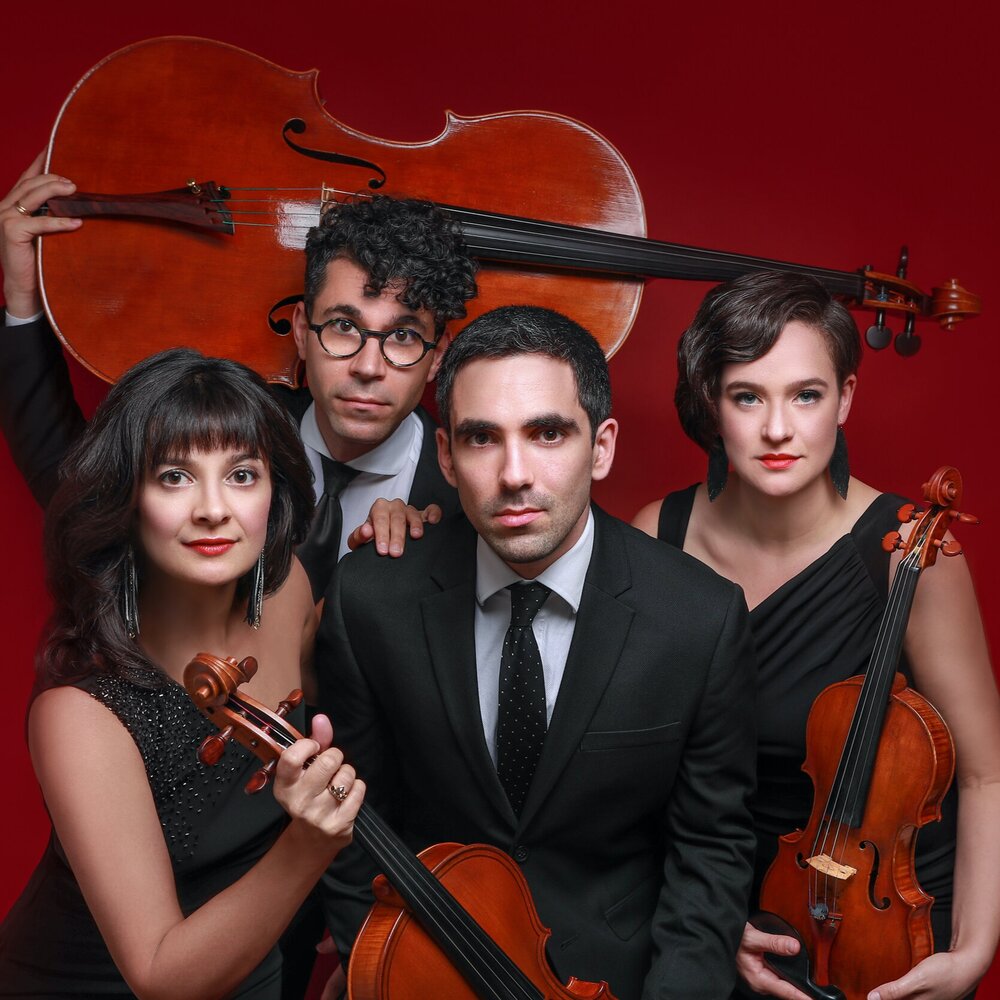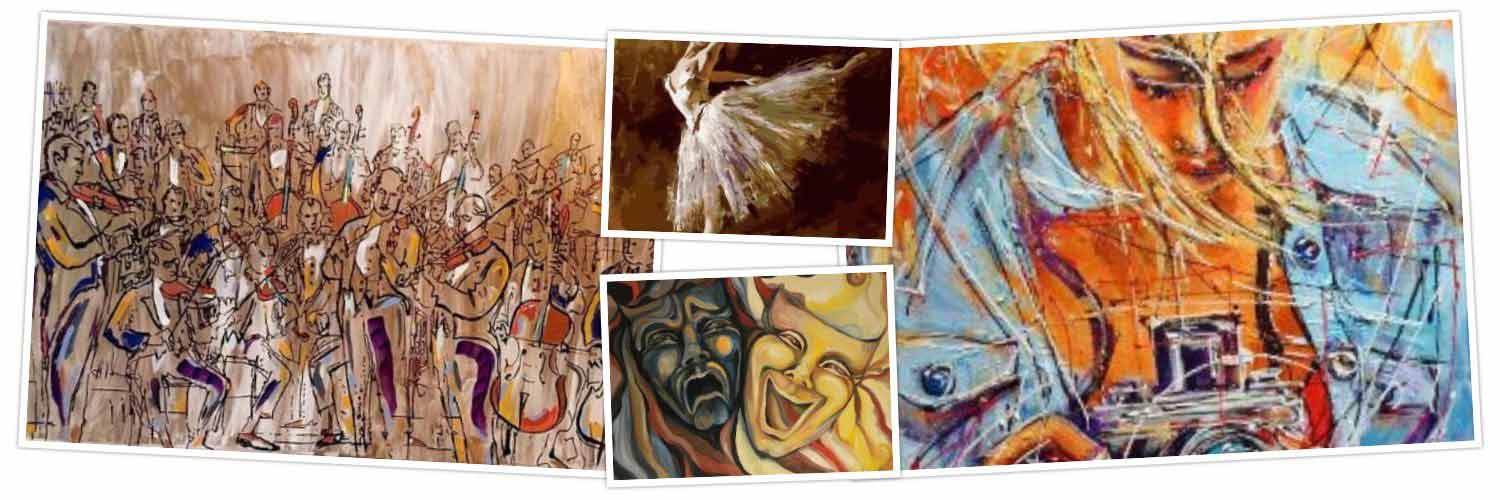Agarita’s New Season Has it All
By JASMINA WELLINGHOFF, Editor
The Agarita Chamber Players are known for their collaborations with other artists, from fellow musicians to dancers, poets, photographers, visual artists, and… a glass blower. Yes, you read that right.
The “glass blower” the group will be collaborating with is a very special one, Gini Garcia, of Garcia Art Glass, who creates the most original, whimsical, and eye-catching glass sculptures, unique light fixtures and a range of other glass works that could easily compete with the creations of the famous Dale Chihuly.
Garcia will be featured in one of the concerts of Agarita’s just announced 2021-22 season. The planning started months ago to develop mutual ideas about how exactly to realize the collaborative project on stage. Other collaborations will be with the writer & photographer duo, Oscar Cesares and Joel Salcido Ruiz, and the contemporary composer Nadia Botello.
“We are always on a lookout for artists who are doing good work in their disciplines,” said Agarita’s artistic director, pianist Daniel Anastasio. “The level of local talent is pretty high. We already knew Gini Garcia’s work and knew that she was a very respected artist. And she has already dipped her toe into musical events, so we thought she might be interesting in doing something with us.”

But not all “collaborations” of the season will be with living artists. In fact, the season will start with a concert at the San Antonio Museum of Art inspired by the current exhibit of American Impressionism, and the ensemble will return to SAMA later in the year to celebrate the museum’s 40th anniversary in December.
As the music director, Anastasio has to come up with the musical programing that fits the “collaborations.” For the season opener at SAMA, the most obvious thing to do would be to program pieces by American composers of the early 20th century when Impressionism was flourishing. But he took another course.
“Rather than just go with musical pieces from that time period, I feel it’s important to express America’s Impressionistic musical voice regardless of the specific decade,” explained Anastasio. “Visual art and musical art do not always develop in parallel ways. They may react to each other. In this case, some of the most beautiful American musical voices didn’t develop until decades after (the Impressionism wave).
So, I am including early American composers like Stephen Foster, Roy Harris, Charles Ives and Florence Price. Price didn’t appear on the scene until the 1940s but I felt that as an African-American woman, she is telling an important American narrative about America in the early 20th century. America had a hard time finding its musical voice because it was coming out of European classical music influences on one hand and jazz and blues and similar influences, on the other hand.”
Given that Americans adopted Impressionism from France, Anastasio also squeezed in Ravel’s sonata for violin and piano, arranged for viola and piano for this concert. Completing the promising program are Edward MacDowell’s song arrangements. It sounds like this concert will be as delightful as the exhibit.
Ravel appears again in the program for the second concert in October, “Postcards from the Border” for which the music will be paired with the photos of Joel Salcido Ruiz and narrative text by writer Oscar Cesares, who traveled the length of the Rio Grande River to record and produce the “Postcards” series about border communities, which first appeared in the Texas Monthly magazine.
“Ravel has water all over his music,” noted Anastasio, referring to the river in the center of the narrative. For this occasion, Ravel will be in the company of Argentinian composer Carlos Guastavino, whose music is an expression of his nation, mixing Argentinian popular and folk music elements “with a compositional rigor found in the great European composers of his day.” He liked to write songs, and a song, “Pampamapa,” will be on the program transcribed for violin, cello and piano.
The concert will end with a medley that includes a Brahms’ waltz, a Strauss polka and conjunto numbers. The message: musical genres influence each other. In this case popular German dances had a strong influence on the development of largely accordion-driven conjunto. So, a Flaco Jimenez song will be in the mix, too.
As for the concert with Gini Garcia, the plans are still fluid at present. For practical reasons, Garcia cannot actually blow hot glass on stage, so alternative options have to be considered. But that show is scheduled for next February, so there’s time to figure things out.
In May of next year, the Agarita quartet will present a collaboration with contemporary composer Nadia Botello who will create an innovative electronic musical work for the group “that interacts with the sounds and flow of San Antonio’s rivers.” And the closing show, Variations on the Goldberg Variations is “a collaboration” between two versions of Bach’s masterpiece.
“I feel like programming is an art form in itself,” noted Anastasio who also teaches piano at San Antonio College. “Classical music needs this. We are no longer expecting people to just listen to music without context. We need to adapt in this time of Netflix; we need to lead the listener through a narrative.”
Agarita will also continue its Humble Hall musical outings that take the four musicians – Anastasio, Marissa Bushman (viola), Ignacio Gallego (cello) and Sarah Silver Manzke (violin), to various neighborhoods where they perform from the back platform of a truck for the people who gather around them. The response has been gratifying, said Anastasio, from people who have never heard classical music before.
————————————————————————————————————————————-
Dates and Locations: Aug. 24 at 5:30 p.m., SAMA; Oct. 15 at 7:30 p.m. Carver Community Cultural Center; Dec. 12 at 11 a.m., SAMA; Feb. 5, 2022 at 7 p.m. location TBD; May 6 at 7:30 p.m., location TBD; June 18, 2022 at 7:30 p.m., The Chapel of the Incarnate World on the UIW campus. All concerts are free.
